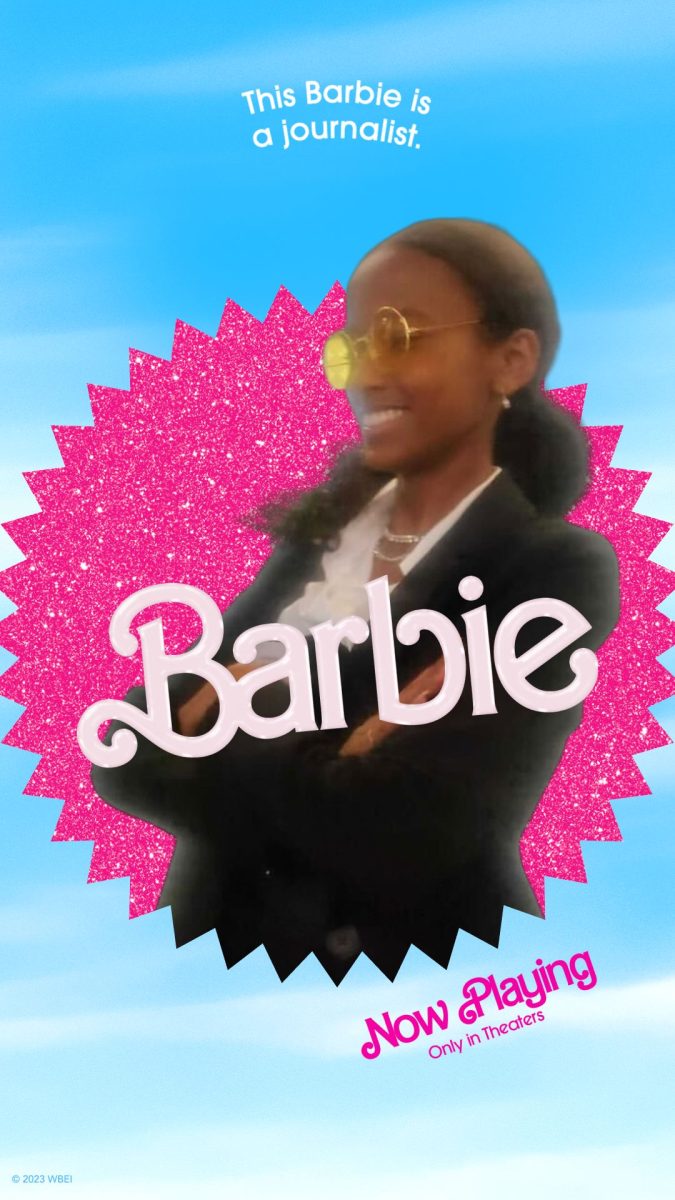It was a full-on takeover. Everywhere you turned, people dressed head to toe in pink would swarm into theaters to watch a childhood memory and leave questioning their own lives. Needless to say, being a therapist was certainly one of Barbie’s career paths. Though our darling doll stayed dehydrated with her nod to our airplay gestures as children, each little detail told the tale of how Barbie played a part in kids’ lives around the world — details that left the audience in awe, but reflecting on the innocence their childhoods may have had.
Featuring the infamous Barbie toy from Mattel, “Barbie” follows the journey of the eponymous doll — played by Margot Robbie – breaking away from the typical thoughts a Barbie doll in Barbie Land would have. Instead of living in her fantasy world belief that the Barbies have promoted feminism with their existence and that women run the world, Barbie begins to find herself thinking about death and finds herself suffering from the worst thing imaginable: FLAT FEET. When receiving counsel from the Weird Barbie, Barbie learns that a real world girl is feeding their own insecurities and worries into her, and it’s her job to head to the real world and fix it before it’s too late.
How can a movie featuring a doll get so popular that it fills theaters for weeks? Well, promotion, as well as the nostalgia linked to the iconic doll, may have been the case. With known companies, singers, and actors playing a role in the movie, it wasn’t a surprise that “Barbie” quickly became an international phenomenon.
The “Barbenheimer” crossover could also explain how “Barbie” packed theaters. With the anticipated release of both movies on the same day, many viewers opted to watch both back-to-back to get the best of both worlds. Instead of focusing on “Oppenheimer,” though, let’s venture into the Barbie Land fever dream. Seeing no Barbie struggling with awkward stares when walking downtown, strangers questioning their talent, or people undermining their positions — it’s a feeling that’s rare for a girl in this world. Though, as the story unfolded, Robbie’s Stereotypical Barbie becomes more human, relatable. Her facade of perfection finally breaks down, and even though she isn’t designed to discover what real world women are dealing with, she does.
Barbie’s adventure to the real world slowly continues to uncover awareness. Immediately feeling uneasy the minute her roller skates land on the sidewalk, she doesn’t have the same confidence she did in Barbie Land. The contrast between how she feels uncomfortable and how Ken feels powerful in the real world is stark and terrifying. Giving up was never in her dictionary: She was Barbie, she could do and be anything, so why would they depict a broken Barbie?
We all have breakdowns, and we all want to give up at some point. That’s what life does. It’s a never-ending cycle of falling down and finding a reason to get back up again. For Barbie, it may have taken an emotional monologue of how hard it is to be a woman to understand that she needs to be strong for everyone else, but a support system can also do the trick. In this broken world, don’t forget to check in on your friends and loved ones, as you never know what they could be going through.
Aside from the sentimental tidbits Barbie threw at us (there were many), Ken’s “Mojo Dojo Casa House” is an elite nod to stereotypical feminine roles in the household. Seeing the Barbies lose their ambitions in order to provide for the Kens is heartbreaking. Why should they lose confidence in themselves and in their careers just because of the patriarchy? Why couldn’t Kens and Barbies reside together in harmony? Well, they ended up working towards it at the end, but that’s not the point.
It’s not like “Barbie” covers anything we didn’t know, but the attention brought to the discrepancies in life with Barbie and Ken highlights the injustices still present in our world. The one line that particularly stuck out was how everyone hated women: “Women hate women. And men hate women. It’s the only thing we all agree on.” It still hurts to see that no matter how we identify, the struggles that occur can still force hatred on women. Kens shouldn’t just run the world, and Barbies shouldn’t either — what would a world be without the other by their side?


